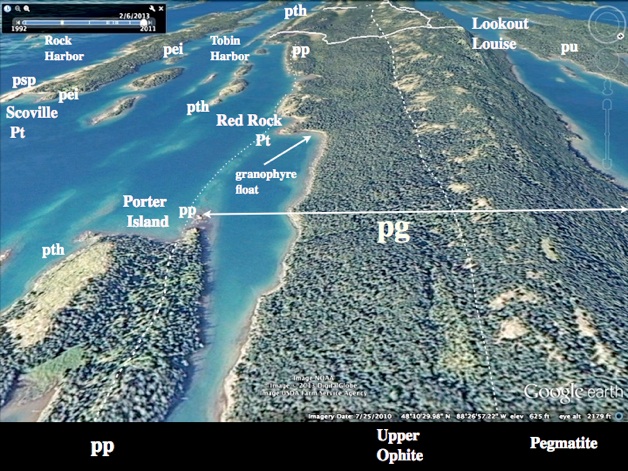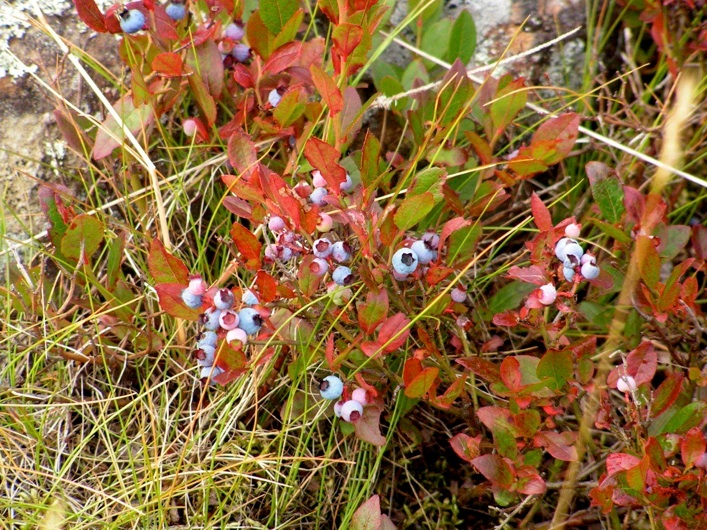Red Rock Point
At Red Rock Point, we will pass excellent examples of entablature jointing of the upper part of the Greenstone flow. The basalt of the entablature is melaphyre, very fine grained. The curvicolumnar nature of a few of the columns resembles some of the Columbia River basalt descriptions (Figure 5). Long and Wood (1986) suggest that entablature jointing results when extensive floods that are created from deranged drainages cause dramatic quenches of solidifying flood basalts. Around the comer of Red Rock Point is an autointrusion of the Greenstone's entablature zone by material that is apparently from the pegmatoid zone. Longo (1984) describes the feature:
A large autointrusive dike was found intruding (N 20° W, 65° E) the columnar-jointed melaphyre at Red Rock Point. Despite an apparent lack of aplites, the dike is texturally similar to the stratiform pegmatoid. It is composed of randomly oriented, euhedral plagioclase laths with interstitial, subhedral augite and pigeonite (no poikilitic textures occur). The plagioclase laths are immense by comparison to the microlites of a typical ophitic unit.
Three characteristic features of the dike are: (1) the abundant plagioclase phenocrysts (up to 1 cm (0.4 in)), (2) a blue-green hue from plagioclase altered to chlorite in the dike, and (3) alignment of plagioclase laths parallel to the dike contact, forming an igneous lamination. Amygdules are more abundant along the dike contact also. The process of autointrusion is similar to the mechanisms of pegmatoid formation, except that after the residual liquid is pressed out of the hosting crystal mesh, the differentiated magma is squeezed up into the vertical tensional fractures.
--Longo 1984

Longo (1984) interprets the auto intrusion to be related to a sag flowout structure, described by McKee and Stradling (1970) as: a large structure that develops as the crust of a partly solidified flow founders and causes the upward escape of the flow's fluid interior (see figure, above). Below the water level at Red Rock Point is an occurrence of coarse grained granophyric rock, which can be found in beach cobbles and boulders and may occur within the Greenstone flow itself.






